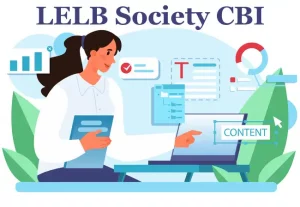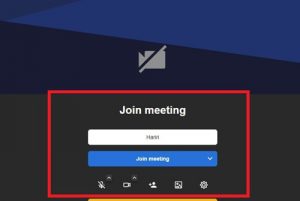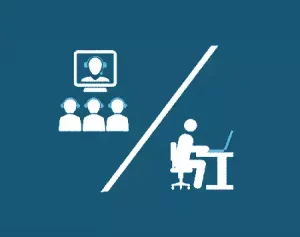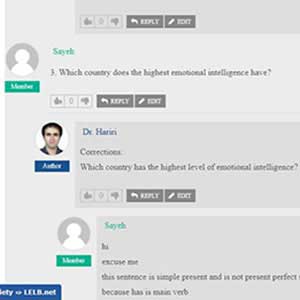Do you wonder how to realize social presence in online learning environments, such as online schools, institutes, universities, and the like? In this article, step-by-step, we’ll guide you through developing and reinforcing the sense of social presence to guarantee learner satisfaction and increase student-student interactivity. First, we’ll define social presence in the context of online education. Then we’ll instruct you how to generate and optimize this significant quality in your online classes or community.
Watch this video on social presence in online learning
What is social presence?
Social presence is described as learners’ ability to perceive other learners as real communicators, commenters or peers in the social context of the online community. This feeling of connectedness is genuinely the driving force behind taking active and responsive roles in education based on learner autonomy.
Social presence can optimize interaction patterns among students in online learning communities, promoting interdependency or social autonomy. This special opportunity to learn from each other can augment learner’s academic satisfaction and sense of belonging to the social context. The three pillars of social presence are emotional expression, open communication, and group cohesion.
Why is social presence in online learning important?
As mentioned earlier, online students should be perceived as real communicators, and to achieve this fulfillment, social presence must be realized in one way or another. For instance, social presence could lead to group cohesion, which is the ability to develop a group identity in order to communicate meaningfully. As a result, group cohesion can account for constructivist learning.

Constructivism in education is described as learner’s ability to construct knowledge actively and responsively instead of taking or copying the information passively. The meaningful experience of constructivist learning through social presence is based on collaborative learning, which will be discussed in more depth in the following section.

Students in the 21st century need to receive early and continuous feedback from both their teacher and classmates. Exchanging feedback in an interactive manner demands that online students be emotionally ready to share their ideas, experiences, and findings with their peers who might be so remote from them physically. Therefore, keeping online students motivated enough to stay in touch with each other in a virtual environment seems to be at the hands of social presence.
Round table activity and social presence
Round table is our core educational activity at LELB Society to practice both synchronous and asynchronous learning in a completely collaborative fashion. In each round table, our English and Persian students study some assigned materials as an out-of-class activity based on flipped learning. The assigned materials have already been taught with our teachers’ embedded lectures or videos.

Using our asynchronous channels of communication, such as interactive comment boxes and English and Persian forums, our students leave at least one fresh question and one response to the existing questions asynchronously as an out-of-class activity. Finally, in our synchronous classes as an in-class activity, both students and teachers hold an informed discussion on the questions and responses in the comment forms and forums to practice negotiation of meaning.
Negotiation of meaning through social presence
To encourage L2 learners to practice negotiation of meaning, content-based instruction should be put to use because the assigned materials and lessons should be interesting and useful enough for online students. To realize social presence in online learning, much attention should be paid to the carefully selected subject matter. These selected themes and topics need to be of great value to the students of the third millennium.

It’s almost impossible to promote social presence in online learning through negotiation of meaning based on boring and useless subject matter. On the contrary, meaningful learning and constructivist learning would certainly trigger more negotiation of meaning to increase more social presence and interactivity. This negotiation of meaning should be held both synchronously and asynchronously to develop social presence in online learning. On the other hand, the selected topics and themes should be challenging and thought-provoking to stimulate asynchronous communication in the discussion boards and comment forms.
You can study the popular tags that are used in our English and Persian lessons at LELB Society to become more familiar with the way we employ content-based instruction to support meaningful learning and constructivism in online education in our bilingual academy. There is no wonder that our English and Persian students in our online bilingual academy are genuinely active and responsive in our comment forms and discussion boards.
Synchronous + asynchronous learning = social presence
In our global village connected through the internet and advanced technology, online education does not necessarily occur synchronously in online classes. It is utterly advisable to tap into an amalgamation of both synchronous and asynchronous learning in any online community to establish and augment social presence in online learning. After all, the essence of social presence is all about the art of nurturing connectedness and interactivity.

To account for interactivity and connectedness, asynchronous learning turns out to be thoroughly pragmatic. For the sake of clarification, in our online bilingual academy, there have been over 5,400 interactive comments posted by our students and teachers at the bottom of our English and Persian lessons. As stated earlier, our round table activity has been incredibly successful in increasing social presence in online learning through integrating synchronous learning in live online classes with asynchronous learning.
On the other hand, the significance of synchronous learning in live classes or webinars with video conferencing should not be overlooked. Bear in mind that your students might live thousands of miles away from you and each other. If they’re conscious of this remoteness, they might find it difficult to develop a sense of belongingness to your online community, which is pivotal to the development of social presence.

Compared to chatting, phone calls, emailing and commenting, video conferencing and video calls are more successful in establishing nonverbal communication among online students as they can see each other, their facial expressions, postures, gestures, and in a nutshell, body language. As a result, online students can easily perceive each other as real communicators in the social context, which is another pillar of social presence.
Intimacy and immediacy in social presence
To develop and promote social presence in online learning, the following two aspects of interaction patterns must be taken into account: intimacy and immediacy. Intimacy refers to learner’s willingness to share personal experiences in the online community. This is based on a feeling of camaraderie and belongingness that should exist for social presence to develop and grow. On the other hand, immediacy in interactivity refers to the degree of latency in responding to the asynchronous comments and questions.

A higher degree of immediacy is essential for the development of social presence in online learning because if online students notice that their comments are not responded in a timely manner, they might feel that they’re so remote from each other, and the sense of connectedness in real communication could easily be questioned. Regarding this issue from another perspective, CALL practitioners and online teachers should not practice immediacy to a high degree.
Too much immediacy from the part of the teacher could block or discourage student-student interactivity. This is something that Dr. Mohammad Hossein Hariri Asl, the author of this article and the creator of LELB Society, understood in his PhD thesis on interactivity and social presence. As a matter of fact, students should be encouraged to learn from each other interactively and asynchronously with the facilitative influence of the teacher.
This controlled and intentional teacher’s immediacy pattern is, in fact, based on scaffolding in education in which the teacher mindfully steps back and encourages the students to learn from each other on their own. Students who are educated in this approach tend to be more autonomous and cooperative over time.
Collaborative flipped learning and social presence
By solely flipping language classes, you cannot necessarily develop social presence in online learning. That’s where collaborative flipped learning comes into view. This modified type of flipped learning focuses on the asynchronous interaction of students taking place in the comment forms and discussion boards that appear at the bottom of assigned videos or lectures. The round table activity, which was explained above, plays an important role in implementing collaborative flipped learning.

Since the log or history of comments is accessible, these discussions about embedded videos or lectures would be ongoing. That is to say, new students could join the discussions anytime, anywhere. By enabling nested or threaded commenting, comments and replies will become easily distinguishable. This is because replies to the existing comments will automatically be indented. As a CALL practitioner, it is essential to optimize the comment boxes or forums to provide a better User Experience or UX.
Authenticity in learning and social presence
Developing social presence in online learning cannot be taken for granted. Certainly, one of its ingredients is student motivation to carry on learning both individually and en masse. As mentioned earlier, negotiation of meaning based on content-based instruction will immerse students in challenging and interesting subject matter. Learning vocabulary in context with images is another technique to provide authenticity in education.

Furthermore, using multimedia resources, including images, videos, text-to-speech functionality, podcasts, etc. is another important aspect that should not be overlooked. Bear in mind that today’s students could get bored so easily if you feed them only with text. To feel that they’re socially connected, online students need to see each other from time to time via video conferencing. Likewise, they should see each other’s avatars while commenting in the asynchronous channels of communication.
Learn autonomy and motivation
Online teachers and educators need to encourage students to take part in language learning actively and responsively. One way to fulfill this objective is negotiated curriculum. Negotiated curriculum is described as engaging students in developing the curriculum, setting assignments, and making assessments. Negotiated curriculum is a practical method to exercise democracy in education, although not all students are culturally ready to acknowledge its efficacy.
Online teachers and CALL practitioners are supposed to treasure students’ opinions and feedback in one way or another. At LELB Society, our students can express their feedback freely in our feedback box forum. When students realize that their ideas carry weight in determining the course of the academic plans and policy in their online community, they’ll develop a stronger sense of belongingness, which is crucial for increasing social presence in online learning.
Additionally, we have recorded and archived over 70 presentations in English and Farsi given by our students with their consent. Thanks to portfolio assessment, all these presentations, articles, topics in forums, comments, etc. are archived in the LELB Society blog while our students are the real authors of these posts. In other words, LELB Society is actually a wiki whose content is developed by its team of authors, teachers and students as a multi-author blog or website on WordPress.

With regard to this type of portfolio assessment at LELB Society, all students, teachers, authors, etc. will grow more motivation to develop their best to our online community to improve their own resume or CV in the form of their profile page that lists all their academic contributions. Needless to say, all these contributions come with multimedia and are linked to each other based on integrative CALL to increase user engagement in our WordPress membership site.



